Crassula perforata subsp. perforata
| Botanical Name | Crassula perforata subsp. perforata |
|||||||||||
| Family | Crassulaceae - The crassula family. |
|||||||||||
| Pronunciation | KRASS-oo-la per-foh-lee-AH-tuh |
|||||||||||
| Common Name(s) |
English: Concertina Plant; Necklace Vine; String of Buttons
Afrikaans: Konsertinabossie; Sosaties ; Sosatiesbossie
|
|||||||||||
| Plant Group |
|
|||||||||||
| Plant Size |
|
|||||||||||
| Position |
|
|||||||||||
| General Information |
|
|||||||||||
| Specific Information | Crassula perforata belongs to a group of crassulas loosely known as 'stacked' crassulas. The opposing pairs of succulent, triangular leaves are joined at the base and 'stacked' densely (about 5 mm apart) on thin stems. The leaf pairs appear to be threaded onto the stems, hence the common names String of Buttons and Necklace Vine. The leaf margins have an attractive reddish tinge which disappears in shade or if over-watered. The plant forms long trailing stems which sprawl untidily on the ground, grow up through shrubbery or hang attractively over rocks. |
|||||||||||
| Ad Break | ||||||||||||
| Flowers | ||||||||||||
| Description | tiny star-shaped flowers in sparse clusters on tall thin stems |
|||||||||||
| Season |
|
|||||||||||
| Colour |
|
|||||||||||
| Growth Rate |
|
|||||||||||
| Plant Uses |
|
|||||||||||
| Distribution and Habitat | from Worcester in the Western Cape, through the Eastern Cape to Pietermaritzburg in KwaZulu-Natal, in Albany Thicket, Fynbos, Grassland, Indian Ocean Coastal Belt, Nama Karoo, Savanna, and Succulent Karoo, in rock crevices, on rock faces and among boulders in ravines |
|||||||||||
| Planting Suggestions | Plant Crassula perforata in well drained, low nutrient soil. As with many Crassulas, it needs some protection from direct sunlight for at least part of the day. This being said, direct sunlight brings out the red colour on the leaves, and increases flowering. As can be seen in the pictures above, in nature it grows in the protection of loose or open scrub or shrubs, affording it both shade in summer as well as protection from light frost in winter. Water well when soil is dry to the touch, but be cautious in winter as cold, wet soil will cause root rot. Old flower stems can be removed but they will turn brittle and fall off by the end of summer. |
|||||||||||
| Lorraine's Garden Notes | I have at times neglected to water this plant and it is tenacious and forgiving. I do remove spent flower stems at times and spread the cuttings beneath the plant as mulch - what came out goes straight back in. |
|||||||||||
| Medicinal Uses | No data found. |
|||||||||||
| Ad Break | ||||||||||||


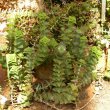
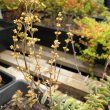

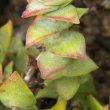
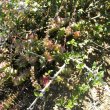
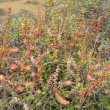
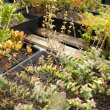


Discuss this plant
Share knowledge, ask a question or give an experience.